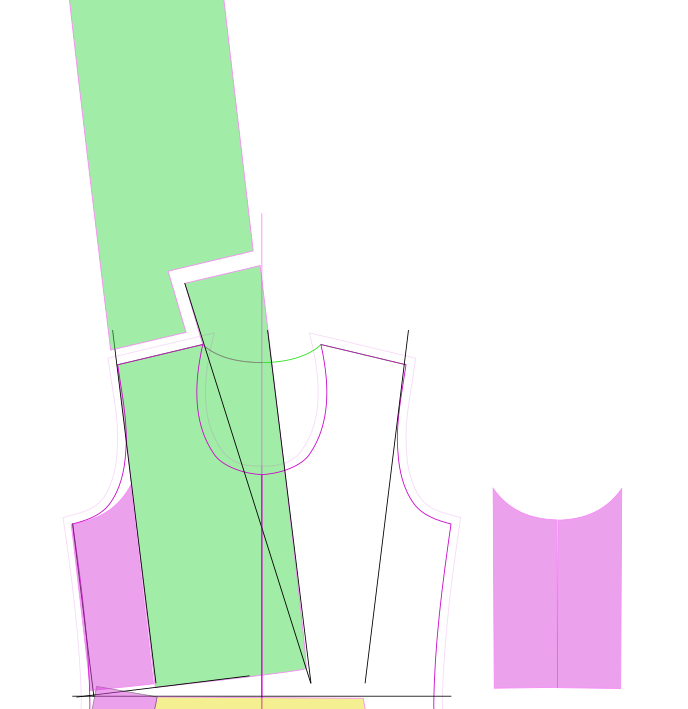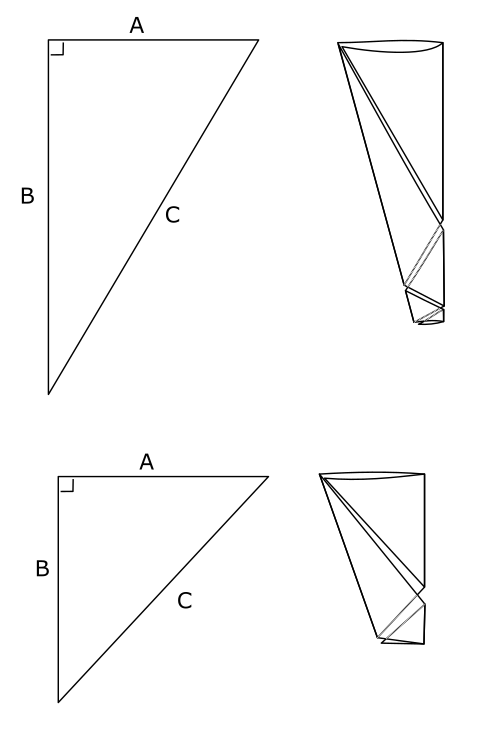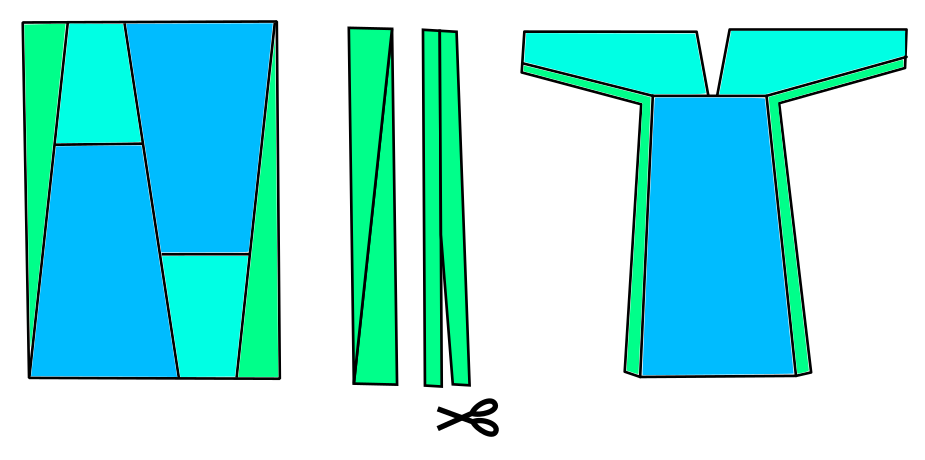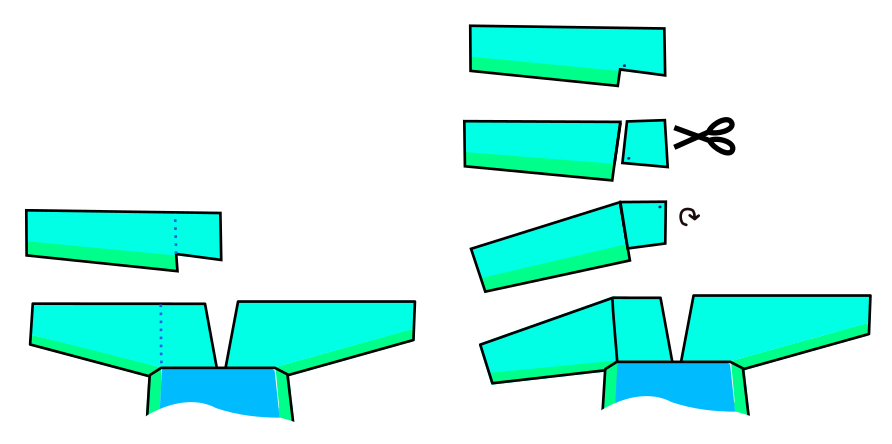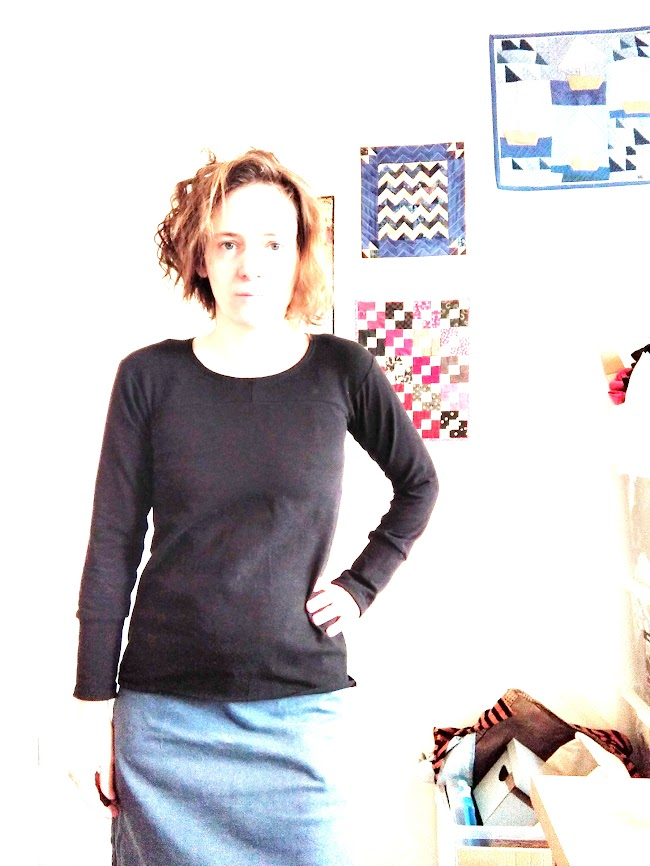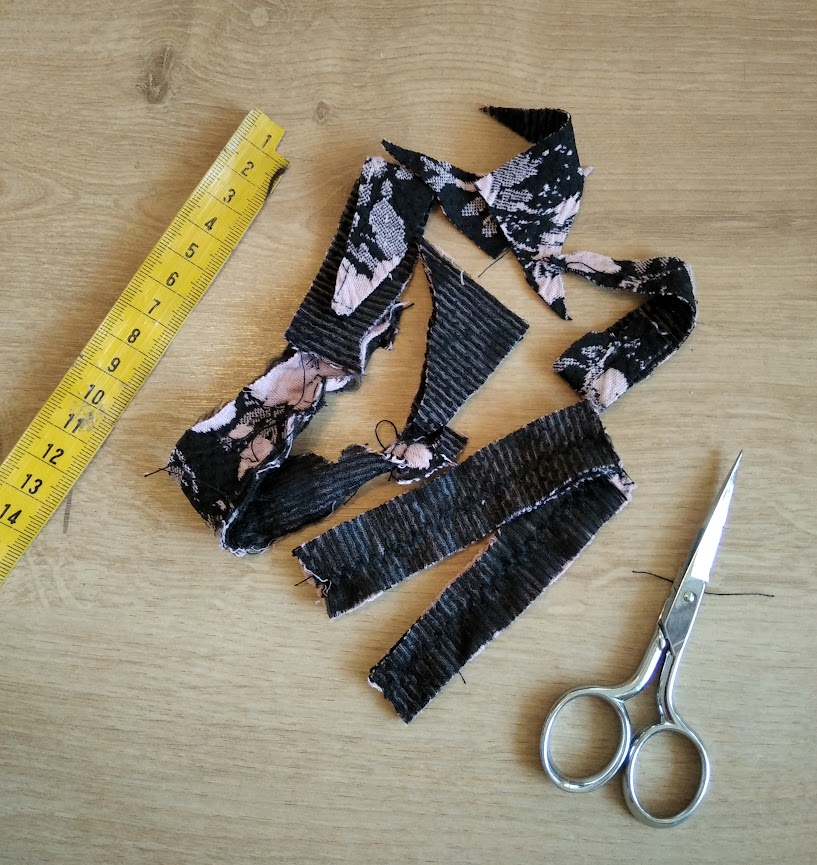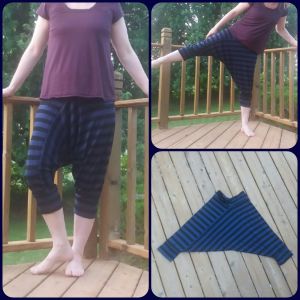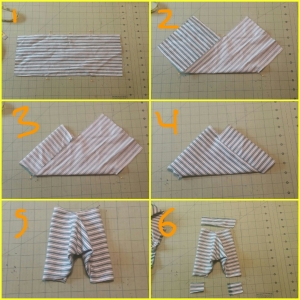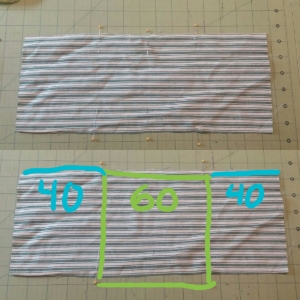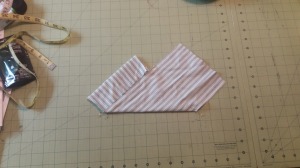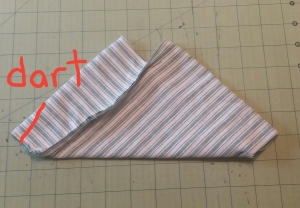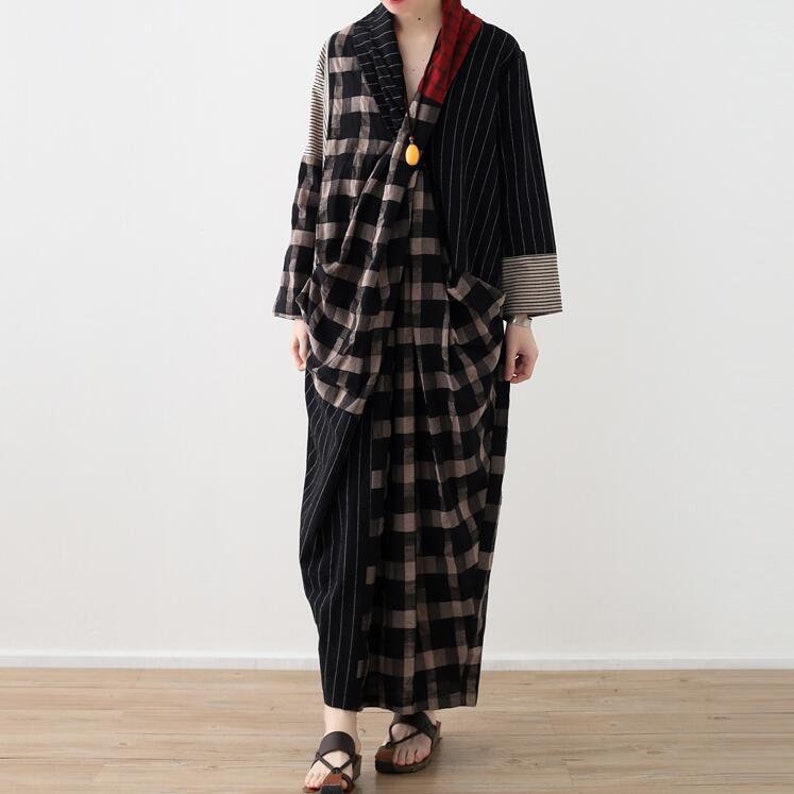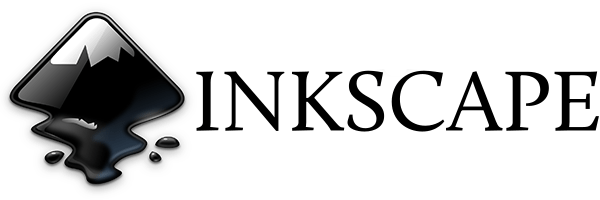I mentioned in a previous post that I’ve sewn several dresses based on the Eura dress. In fact when I started pulling them out of my closet I was surprised at how many Eura-inspired dresses I actually have!

Eura Inspiration
So, the original dress looked like this, a pretty basic, loose-fitting dress, made of three angled pieces.

The back and the front are the same. There are some variations in how you can cut it, based on fabric width, and where you want your seams (on the sleeves and centers, or on the gusset).


This is a good article about the history of the Eura dress (actually an underdress!). Studio Faro has played with this pattern a bit, as has Liz Haywood.
Eura #1: classic


The first Eura dress I sewed was pretty true to the original pattern, a very standard zero-waste pattern. In fact, it was everything I dislike about zw patterns: it was woven, it was loose-fitting, it was oversized, and it was boring. I added waist ties to help give it some shape; they did not help.
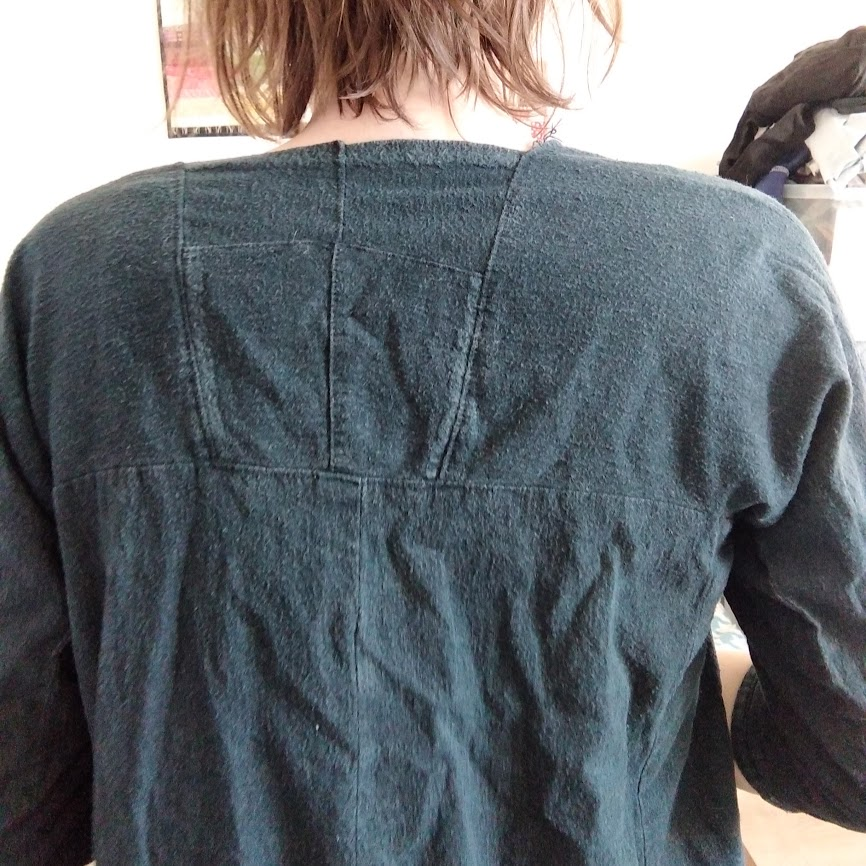
The only thing I did differently from the original was to fill in the back neckline with scraps.

The neckline is straight cut, so I just folded over the edges and hemmed. The sleeves were VERY tight so I had to cut them shorter. They are still too tight at the hem.
Eura #2: knit, short sleeves, straight-cut gusset
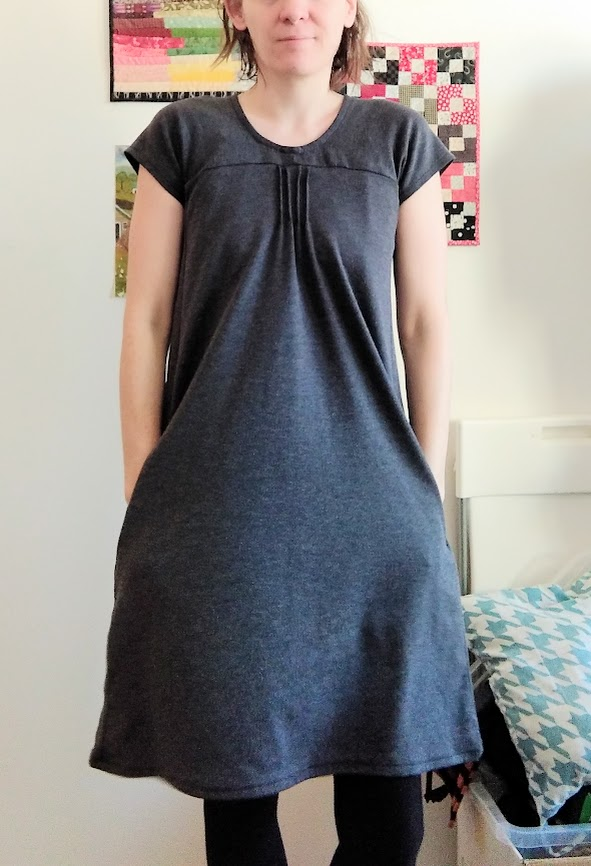

The second dress had some major changes, the most important being that I vastly prefer knit fabrics. So this and all future versions are knit. I changed the sleeves to a short sleeve, and I came up with the (fairly clever, if I do say so myself) idea of using the triangle cut-offs to make a more straight gusset – this makes the shape more like a normal A-line and less flowy.
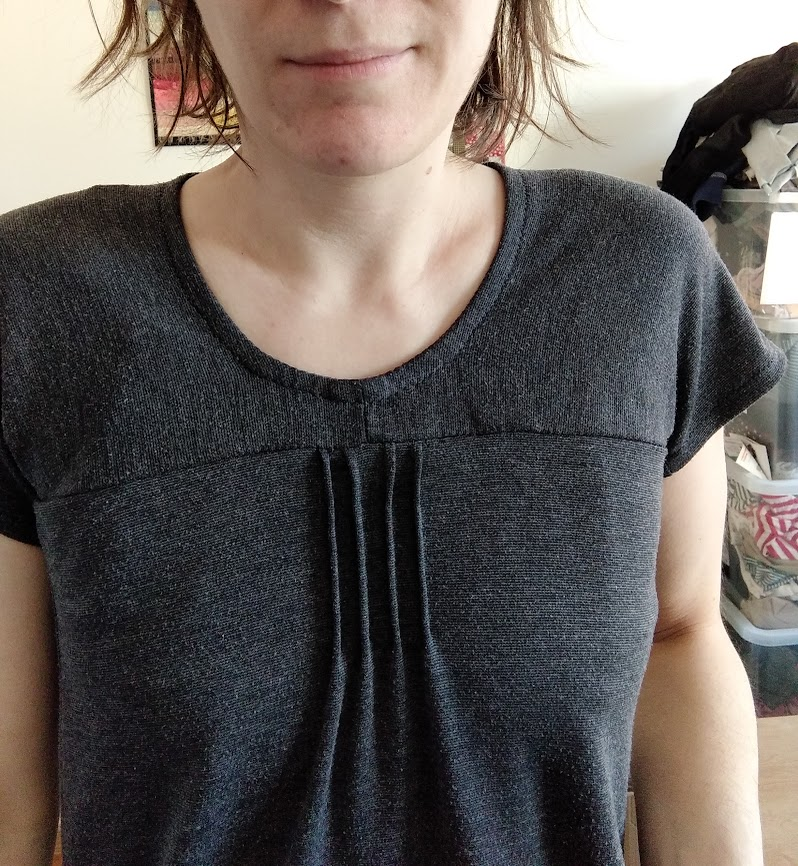
Just for aesthetics I added some pintucks at the front. Not with proper drafting, of course – I just yanked on the fabric until it stretched out and then brought it back in with the pin tucks.

I also added an inset at the back neck. I have wide shoulders and a wide back, so this makes the shoulders a little more comfy, and pushes the sleeves slightly to the front (similarly to how a standard armscye is less curved at the back, so the sleeves angle towards the front, since your arms spend more time in front of you than behind).
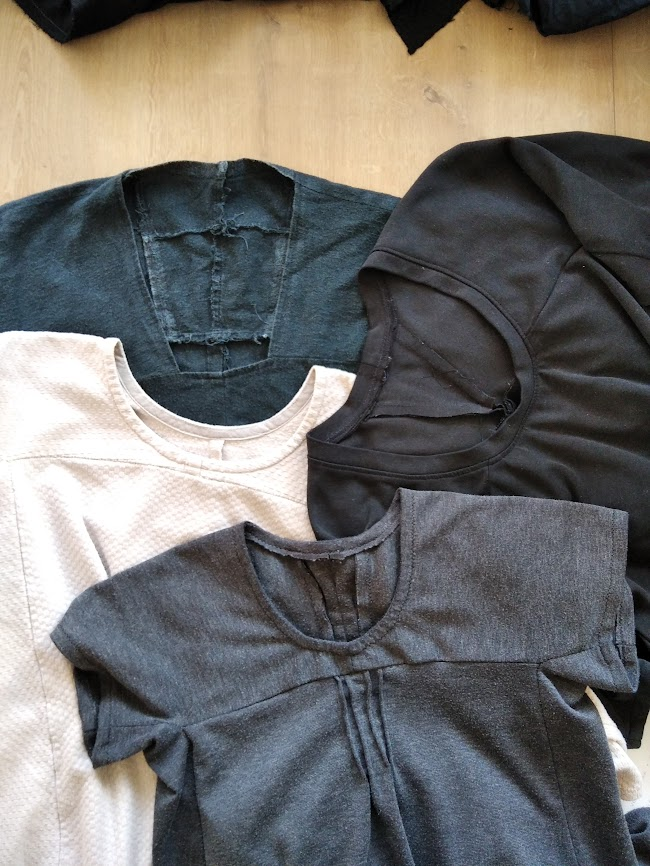
In all the knit versions I abandoned the straight neckline and cut a standard curved one. This one is finished with a band of fabric on the inside, which was a terrible idea – future ones use a standard band, or bias binding on the inside.
Eura #3: tapered gusset, in-gusset pockets
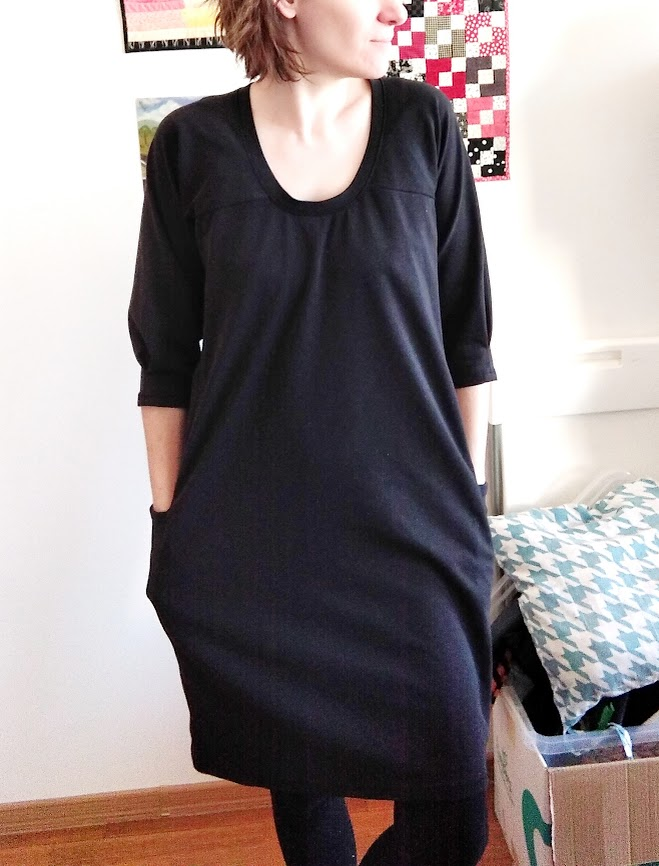
The major change in this version was the shape of the gusset. In this pattern the majority of the shaping comes from the gusset, so let’s look at the shapes a little closer.


- In the first version the gusset was a triangle – the resulting dress is VERY flowy at the hem.
- In the second version the gusset was a rectangle / strip – the dress is A-line.
- In this third version, the gusset is tapered at top and bottom – the dress is fitted.
- In later versions I mathed a little harder and worked out how to not have the points of the gusset chopped off.

The previous versions had standard in-seam pockets. This one has horizontal pockets in the gusset. Here they are seamed, somewhat clumsily, in later versions the whole gusset-and-pocket is cut as one piece.

The three-quarters length sleeve was a little loose so I pleated it before hemming.
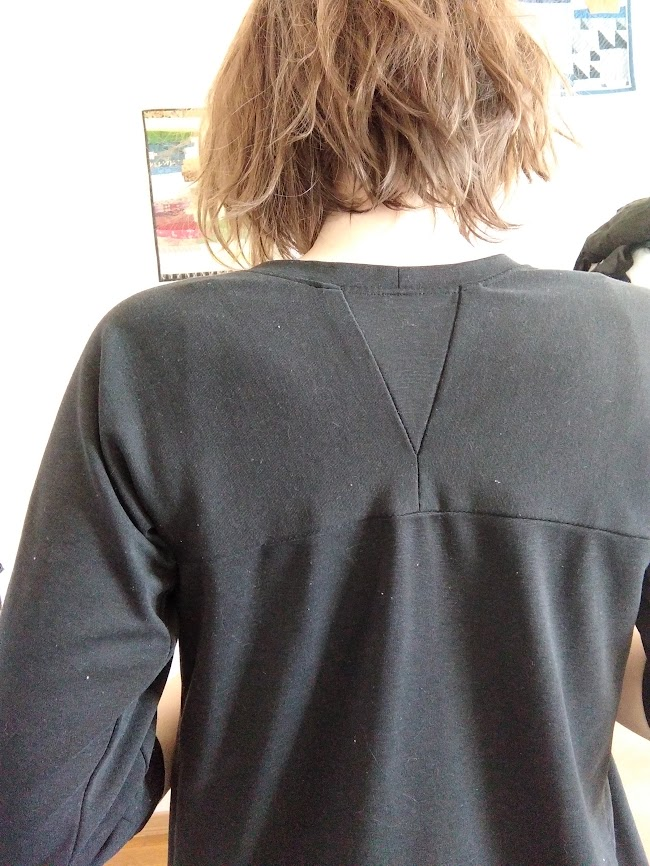
This version also has an inset at the back. You can see that for this version I used a standard neck band.
Eura #4-5: better fit, better gusset and pockets, better sleeves


The next versions were just refining the third version. The refinements worked and I sewed two of the same – it turned out to be a lesson in how important fabric choice is! The pink-beige fabric has very minimal stretch, it’s something like sweat-shirt fabric, and the plaid version has more than 50% stretch – at the neckline especially you can see the difference, and I can feel how much tighter the armscye is on the pink one.

The necklines of both of these are finished with bias binding.

I refined the math a little (ahem, thought about it beforehand instead of just jumping in with the scissors) and cut the whole gusset and pocket as one piece.
Not-quite-Eura #6 – Marshall Top

This is a pattern I’m still working on but I want to show it here because the dress just keeps evolving! When the gusset is square-cut, there’s no reason it can’t be cut as part of the sleeve and top. It leaves a chunk where the “sleeve” part of the sleeve meets the “shoulder/yoke” part of the sleeve…

… so what if you put a seam there? And if there’s a seam there, maybe we can angle it, so that the sleeve ends up at an angle, not straight like a T?

It ends up like this, a very standard-looking knit top!
Patterns
If anyone happens to be a EU 38-40 (medium, bust 84-86) and wants to make your own, here are the patterns I used! At some point in the future I want to have a go at grading them to multiple sizes but, as I’ve said before, we’ll see.
The “original” Eura dress, made for woven fabrics:

A short-sleeved A-line version for knit fabrics:

A long-sleeved version with a more tapered skirt, again for knit fabrics. I’ve made it in two different knits and while both are comfortable, the stretcher knit is far more comfortable around the armsyces!

Happy sewing 🙂



